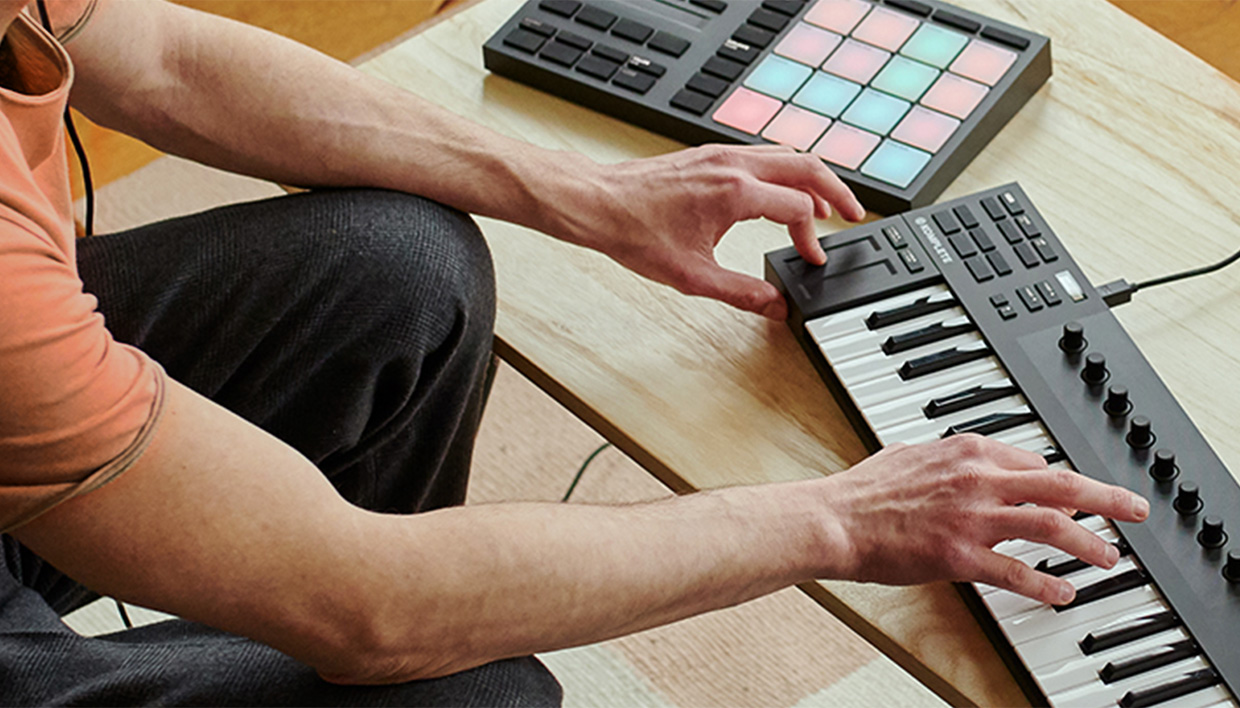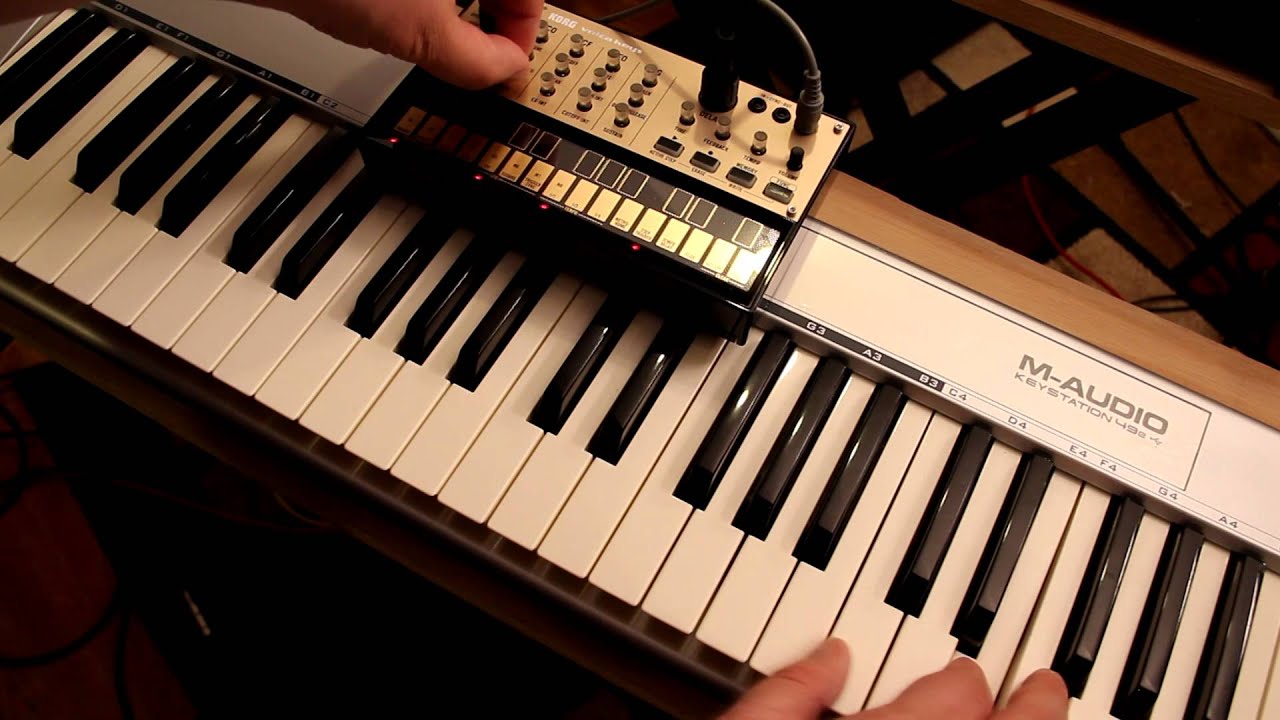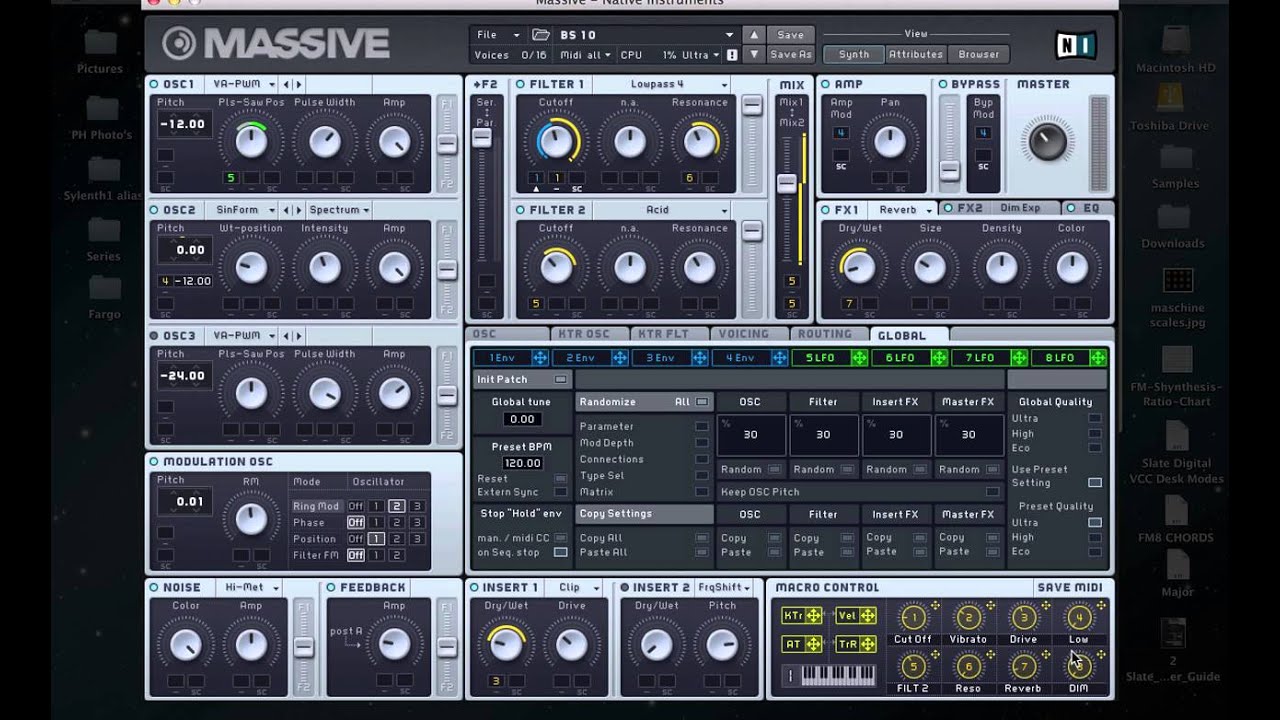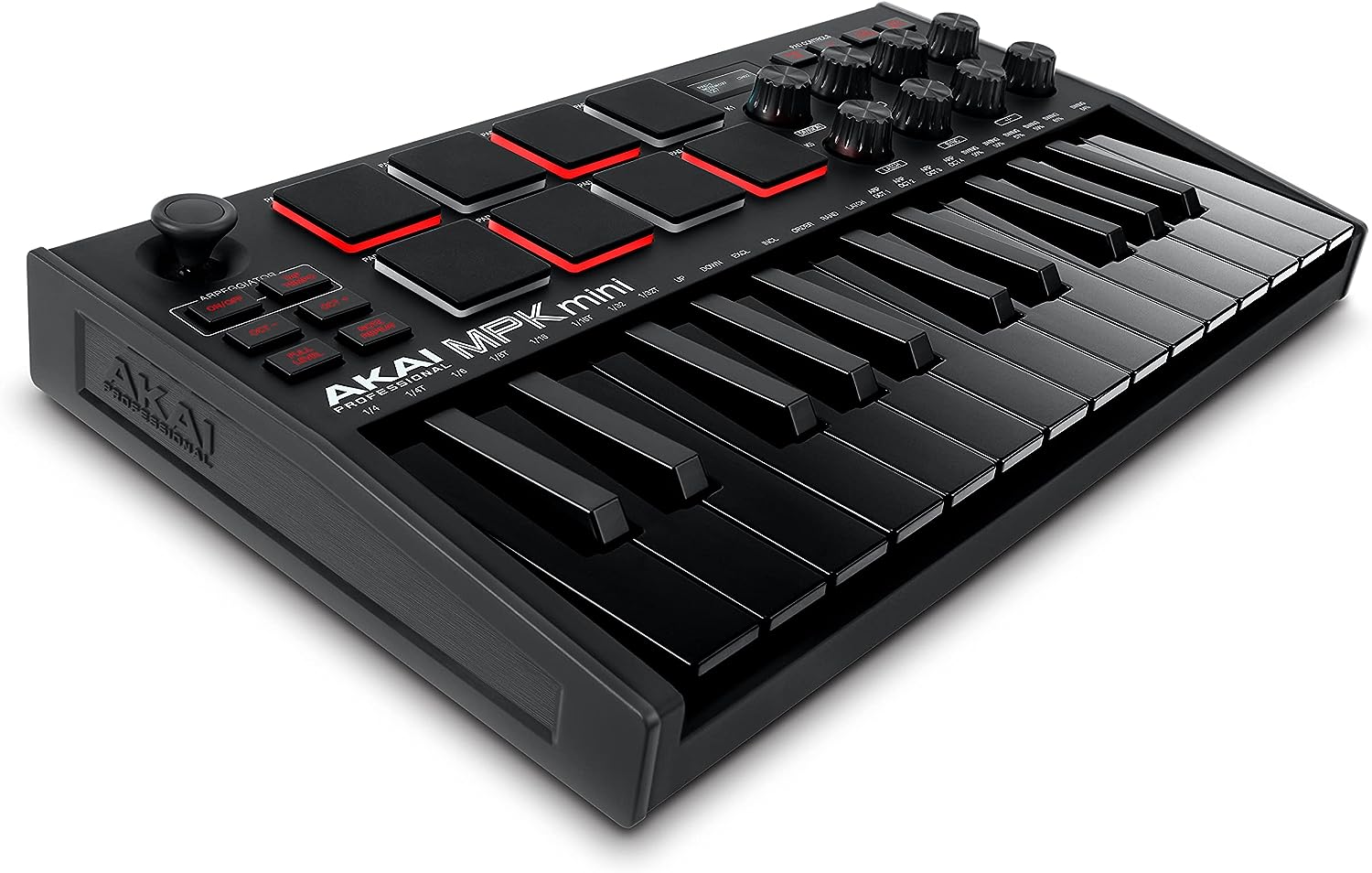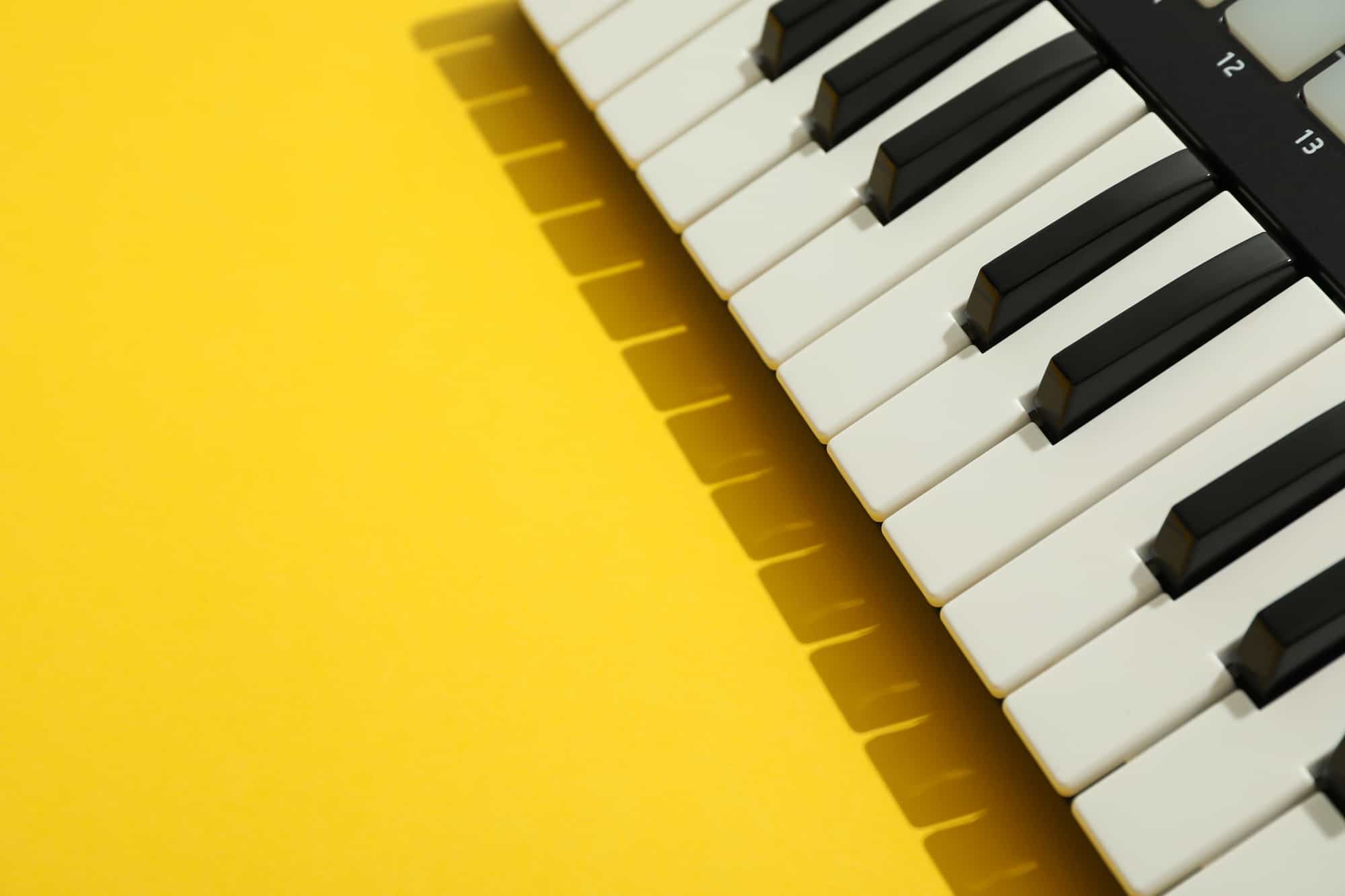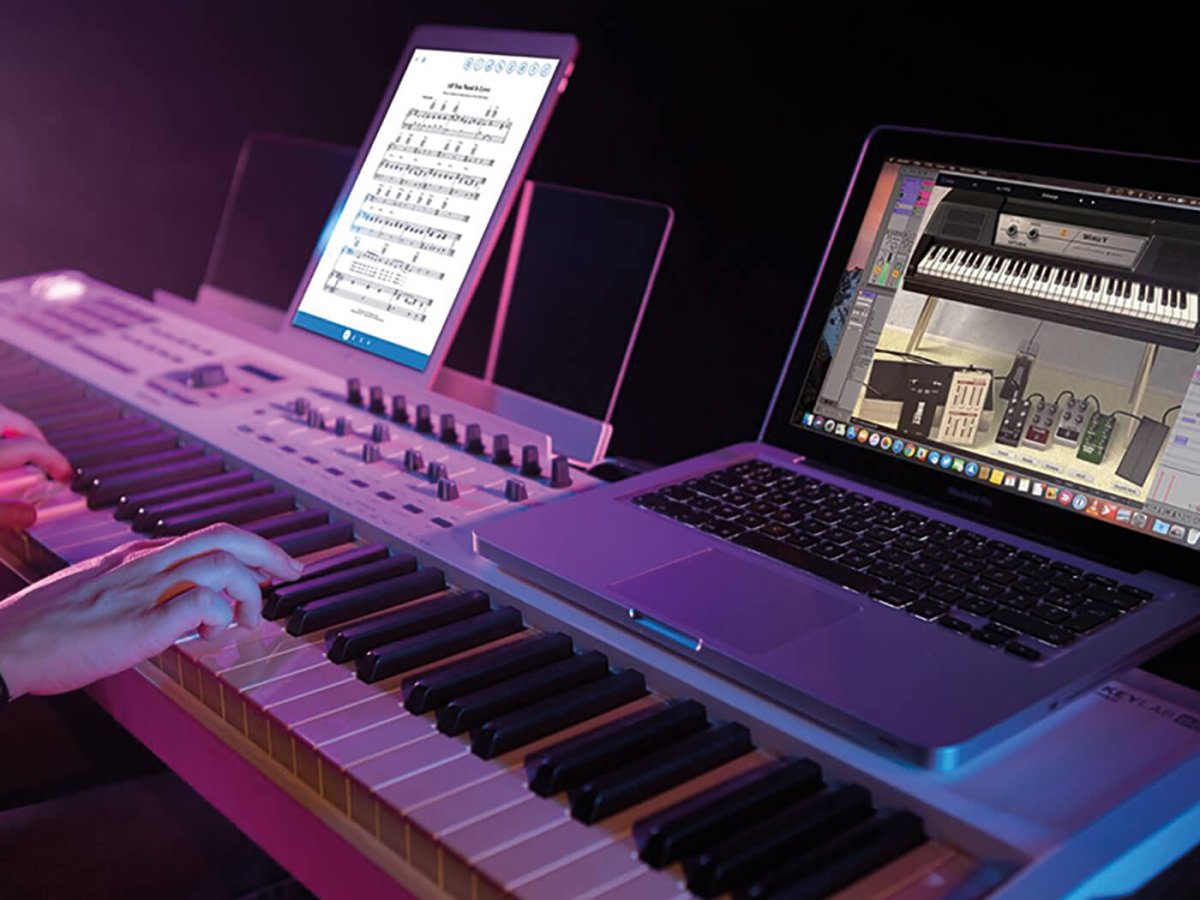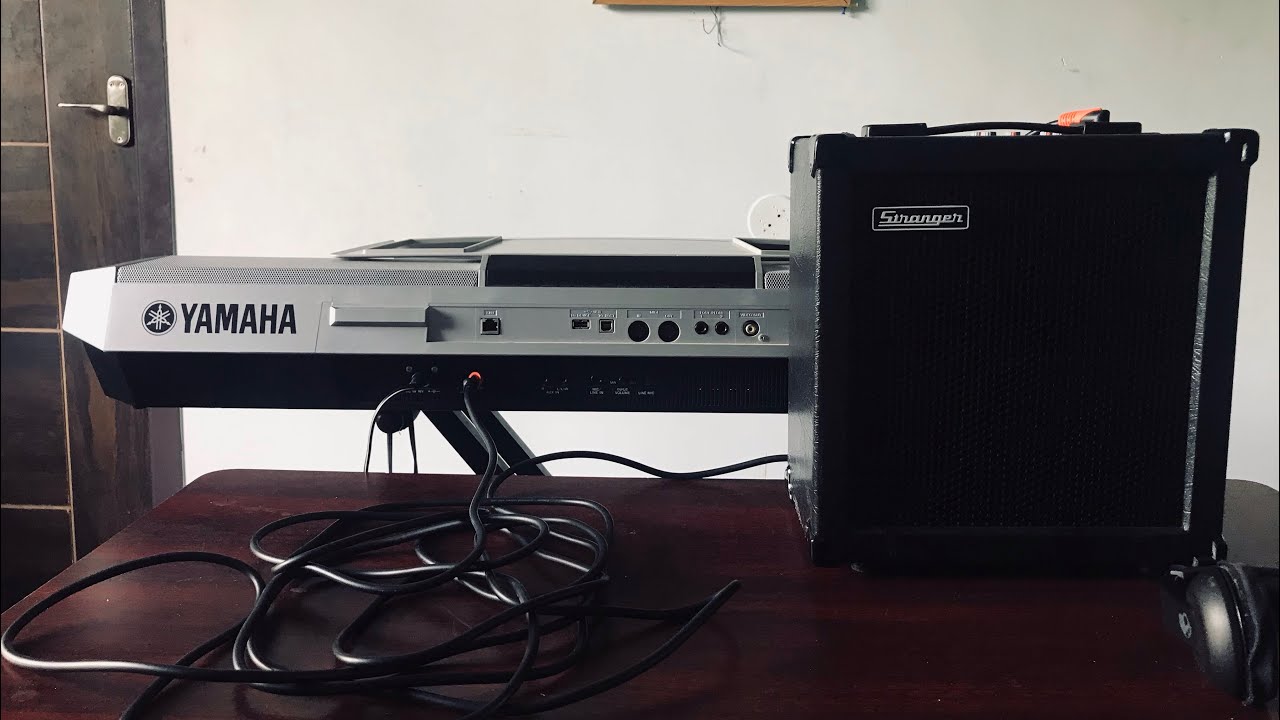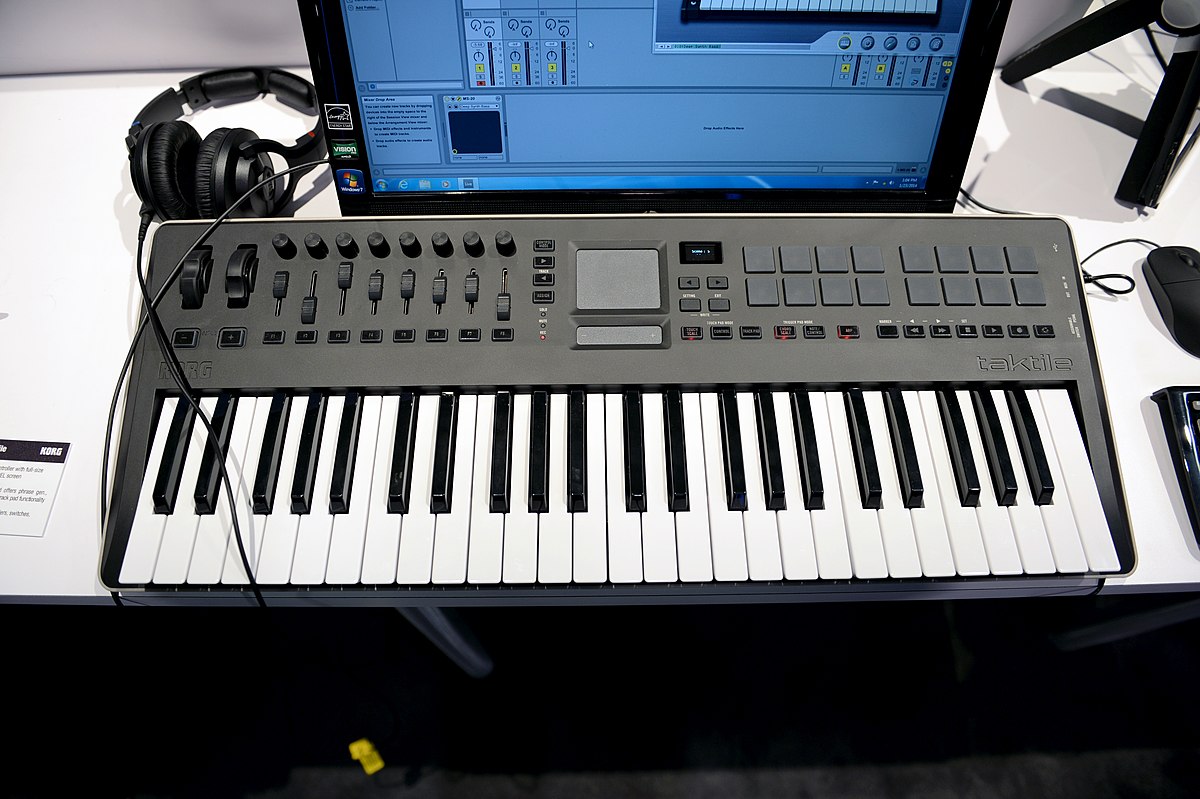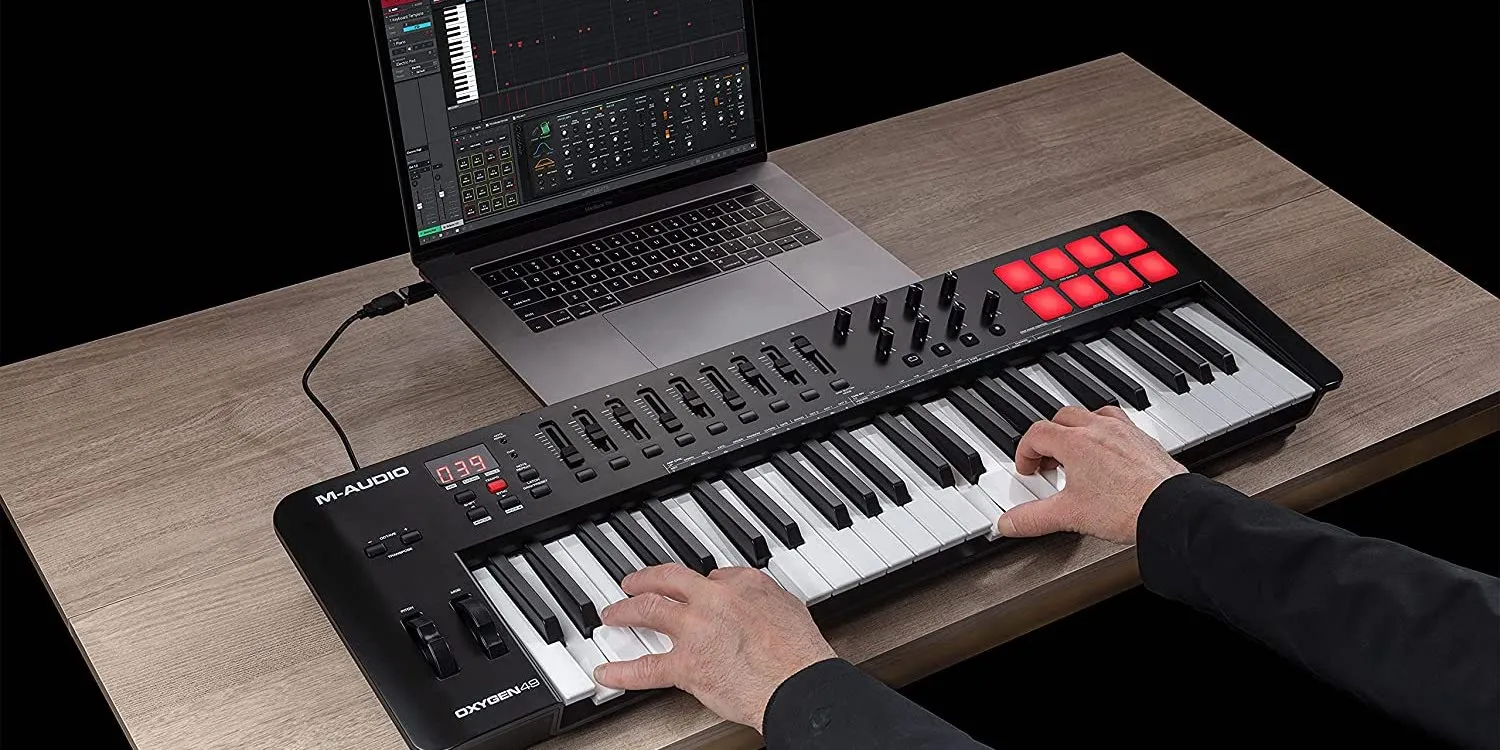Introduction
Are you ready to embark on an exciting musical journey with a MIDI keyboard? Whether you're a budding musician or a seasoned player looking to expand your creative horizons, learning to play a MIDI keyboard can open up a world of possibilities. This versatile instrument allows you to explore a wide range of sounds, experiment with different musical styles, and unleash your creativity in ways that traditional keyboards may not offer.
In this comprehensive guide, we'll walk you through everything you need to know to get started with your MIDI keyboard. From choosing the right instrument to understanding MIDI channels and messages, connecting your keyboard to a computer, and using Digital Audio Workstation (DAW) software, we've got you covered. You'll also learn essential techniques for playing, recording, and honing your skills to become a proficient MIDI keyboardist.
Whether you're drawn to the allure of electronic music, eager to compose your own tracks, or simply looking to add a new dimension to your musical repertoire, the MIDI keyboard is a powerful tool that can help you achieve your goals. So, let's dive in and discover the exciting world of MIDI keyboards together. Get ready to unleash your creativity and make beautiful music with this dynamic and versatile instrument.
Choosing the Right MIDI Keyboard
When it comes to selecting the perfect MIDI keyboard, there are several factors to consider to ensure that it meets your specific needs and preferences. Whether you’re a beginner or an experienced musician, finding the right instrument can significantly impact your overall playing experience. Here are some essential considerations to keep in mind:
- Key Count and Size: The number of keys on a MIDI keyboard can vary, typically ranging from 25 to 88 keys. If portability is a priority, a compact 25-key keyboard may be suitable for on-the-go music production. On the other hand, if you prefer a wider range for playing complex pieces, a full-size 88-key keyboard might be more suitable.
- Key Action: MIDI keyboards offer different types of key actions, such as weighted, semi-weighted, and synth-action keys. Weighted keys simulate the feel of an acoustic piano, while synth-action keys are lighter and more responsive, making them ideal for electronic music production.
- Additional Controls: Consider whether you require additional controls such as knobs, sliders, and pads for adjusting parameters, triggering samples, or controlling software instruments. These features can enhance your creative workflow and provide hands-on control over your music production.
- Aftertouch and Velocity Sensitivity: Look for a MIDI keyboard with aftertouch and velocity-sensitive keys to add expressive nuances to your playing. Velocity sensitivity allows for dynamic control over the volume and sound of each note, while aftertouch enables you to modulate sounds in real time.
- Integration with DAW Software: Ensure that the MIDI keyboard is compatible with your preferred Digital Audio Workstation (DAW) software. Seamless integration with your DAW can streamline your workflow and enhance your overall music production experience.
- Portability and Connectivity: If you plan to take your MIDI keyboard on the go or perform live, consider the portability and connectivity options. Look for keyboards that are lightweight, compact, and equipped with USB or MIDI connections for easy integration with your computer or mobile devices.
By carefully evaluating these factors and considering your specific musical goals, you can make an informed decision when choosing the right MIDI keyboard. Whether you prioritize performance, portability, or versatile functionality, selecting a keyboard that aligns with your preferences will set the stage for an inspiring and rewarding musical journey.
Connecting Your MIDI Keyboard
Once you’ve chosen the perfect MIDI keyboard, the next step is to connect it to your computer or mobile device to unlock its full potential. Establishing a seamless connection is essential for integrating your keyboard with Digital Audio Workstation (DAW) software, enabling you to control virtual instruments, record performances, and unleash your creativity. Here’s a step-by-step guide to connecting your MIDI keyboard:
- USB or MIDI Connection: Most modern MIDI keyboards feature USB connectivity, allowing you to plug the keyboard directly into your computer via a USB cable. Alternatively, some keyboards may have traditional MIDI ports for connecting to external MIDI interfaces or audio interfaces. Determine the appropriate connection method based on your keyboard’s available ports and your computer’s input options.
- Install Driver Software: If your MIDI keyboard requires specific driver software for proper functionality, ensure that you install the necessary drivers on your computer. This software facilitates communication between the keyboard and your computer, enabling them to exchange MIDI data effectively.
- Configure MIDI Settings: Access the MIDI settings within your computer’s operating system or DAW software to configure the MIDI input and output settings. Assign the MIDI keyboard as the input device to receive MIDI data from the keyboard and set the appropriate MIDI channels for transmitting and receiving musical information.
- Test Connectivity: Once the connections and settings are in place, test the MIDI keyboard’s connectivity by playing notes on the keyboard. Verify that the MIDI data is being transmitted to your computer and that the software recognizes the input from the keyboard.
- Utilize MIDI Thru and Out: If your MIDI keyboard includes MIDI Thru and Out ports, these can be used to connect additional MIDI devices in a daisy-chain configuration. MIDI Thru allows you to pass MIDI data from the keyboard to other devices, while MIDI Out sends MIDI data from the keyboard to external sound modules or synthesizers.
- Explore MIDI Mapping: Take advantage of MIDI mapping features within your DAW software to assign parameters, effects, and virtual instrument controls to specific knobs, sliders, or pads on your MIDI keyboard. This customization enables you to tailor the keyboard’s controls to suit your preferred workflow and creative requirements.
By following these steps and ensuring a solid connection between your MIDI keyboard and computer, you’ll be ready to harness the full potential of your instrument and dive into the exciting world of music production and performance.
Understanding MIDI Channels and Messages
As you delve into the realm of MIDI keyboards, it’s essential to grasp the fundamental concepts of MIDI channels and messages, as they form the backbone of communication between your keyboard and external devices. MIDI, which stands for Musical Instrument Digital Interface, utilizes channels and messages to transmit musical data and control information. Here’s a breakdown of these crucial elements:
MIDI Channels: MIDI keyboards operate on 16 channels, each serving as an independent pathway for transmitting musical data. This segmentation allows for the simultaneous control of multiple instruments or sound sources within a music production setup. By assigning different MIDI channels to various instruments or tracks in your DAW software, you can control and play them independently using a single MIDI keyboard.
MIDI Messages: MIDI communication is facilitated through a variety of messages that convey different types of musical information. The primary MIDI messages include note-on and note-off messages, which trigger the start and end of a note’s sound, respectively. Additionally, MIDI messages encompass control change (CC) messages for adjusting parameters, program change messages for switching instrument presets, and pitch bend messages for modulating pitch in real time.
Channel Voice Messages: MIDI channels primarily transmit channel voice messages, which include note-on and note-off messages, along with other performance-related data such as velocity (the force with which a key is struck) and aftertouch (pressure applied to keys after initial contact). These messages enable expressive control over musical nuances and dynamics, allowing for a more natural and emotive performance on the MIDI keyboard.
Channel Mode Messages: In addition to channel voice messages, MIDI channels can also convey channel mode messages, which govern the operational modes of MIDI devices. These messages control functions such as local on/off (determining whether the MIDI keyboard’s internal sounds are heard), all notes off (silencing all sounding notes), and reset messages for clearing specific settings.
By understanding the role of MIDI channels and messages, you’ll gain insight into how MIDI keyboards communicate with external devices and software, enabling you to harness the full potential of your instrument for expressive performances, intricate compositions, and seamless integration with your music production setup.
Using DAW Software with Your MIDI Keyboard
Integrating your MIDI keyboard with Digital Audio Workstation (DAW) software unlocks a world of creative possibilities, empowering you to compose, record, and produce music with unparalleled flexibility and control. DAWs serve as the central hub for music production, offering a wide array of virtual instruments, audio effects, and recording tools. Here’s a comprehensive guide to using DAW software in conjunction with your MIDI keyboard:
- Setting Up MIDI Input: Within your DAW, configure the MIDI input settings to recognize and receive data from your MIDI keyboard. Assign the MIDI keyboard as the input device for controlling virtual instruments, recording MIDI data, and triggering software effects.
- Virtual Instrument Control: DAWs provide access to a vast selection of virtual instruments, including synthesizers, pianos, drums, and orchestral sounds. Use your MIDI keyboard to play and control these instruments, leveraging its expressive capabilities to imbue your music with emotion and depth.
- Recording MIDI Performances: Capture your musical ideas by recording MIDI performances directly into your DAW. Whether you’re playing melodies, harmonies, or intricate sequences, the MIDI keyboard serves as a versatile tool for translating your creativity into digital form.
- Real-Time Parameter Control: Many DAWs allow for real-time control of software parameters using MIDI. Utilize the knobs, sliders, and pads on your MIDI keyboard to manipulate instrument settings, effects, and mix parameters, providing hands-on control over your music production workflow.
- Custom MIDI Mapping: DAW software offers MIDI mapping capabilities, enabling you to assign specific functions and controls on your MIDI keyboard to various software parameters. This customization allows for personalized and intuitive control over your virtual instruments and effects, tailored to your preferred playing style.
- Sequencing and Arrangement: Arrange and edit MIDI data within your DAW to create intricate compositions, build musical arrangements, and craft dynamic performances. The MIDI keyboard serves as a versatile tool for inputting, editing, and arranging musical phrases and patterns within your DAW’s timeline.
By harnessing the synergy between your MIDI keyboard and DAW software, you can unleash your creative potential, streamline your music production workflow, and bring your musical ideas to life with precision and artistry. Embrace the seamless integration of hardware and software as you embark on your musical journey, and let your MIDI keyboard become a conduit for boundless creativity within the digital realm.
Playing and Recording with Your MIDI Keyboard
As you immerse yourself in the world of MIDI keyboards, mastering the art of playing and recording is essential for translating your musical ideas into captivating compositions. Whether you’re a performer, composer, or producer, the MIDI keyboard serves as a versatile instrument for expressive performances and seamless recording. Here’s a comprehensive guide to playing and recording with your MIDI keyboard:
- Expressive Playing Techniques: Leverage the dynamic capabilities of your MIDI keyboard to imbue your performances with expressiveness and nuance. Utilize velocity-sensitive keys to control the volume and intensity of each note, and explore aftertouch for adding subtle modulations and articulations to your playing.
- Exploring Musical Styles: Experiment with a diverse range of musical styles and genres using your MIDI keyboard. Whether you’re delving into classical piano compositions, crafting electronic dance melodies, or creating lush orchestral arrangements, the versatility of the MIDI keyboard allows for seamless exploration across musical landscapes.
- Recording MIDI Performances: Capture your musical expressions by recording MIDI performances directly into your DAW. Whether you’re improvising melodies, crafting intricate chord progressions, or layering complex harmonies, the MIDI keyboard serves as a versatile tool for translating your musical ideas into digital form.
- Layering and Multitracking: Utilize the multitrack recording capabilities of your DAW to layer multiple MIDI tracks, each driven by your MIDI keyboard. Experiment with stacking different instrument sounds, creating rich textures, and building complex arrangements to bring your musical vision to fruition.
- Quantization and Editing: Refine your MIDI performances by applying quantization to align note timings with precision. Additionally, use MIDI editing tools within your DAW to fine-tune note velocities, adjust timing, and sculpt the nuances of your recorded performances to perfection.
- Real-Time Performance Recording: Embrace the spontaneity of real-time performance recording with your MIDI keyboard. Whether you’re capturing live improvisations, intricate solos, or expressive passages, the MIDI keyboard empowers you to preserve the raw emotion and energy of your musical performances.
By honing your playing skills and mastering the art of recording with your MIDI keyboard, you’ll unlock a world of creative possibilities, enabling you to craft captivating compositions, dynamic performances, and immersive soundscapes. Embrace the fluidity and versatility of the MIDI keyboard as you breathe life into your musical ideas, and let your creativity flow freely within the realm of digital music production.
Tips for Improving Your MIDI Keyboard Skills
Embarking on a journey to enhance your MIDI keyboard skills opens up a world of musical exploration and creative growth. Whether you’re a novice seeking to refine your playing technique or an experienced player looking to expand your expressive capabilities, these tips will help you elevate your proficiency with the MIDI keyboard:
- Practice Regularly: Dedicate consistent time to practice and play your MIDI keyboard. Regular practice sessions enhance muscle memory, dexterity, and familiarity with the instrument, allowing you to navigate the keys with ease and precision.
- Explore Different Sounds: Experiment with a diverse range of instrument sounds and timbres available on your MIDI keyboard. Delve into various presets, from classic pianos and lush strings to futuristic synths and dynamic percussion, to expand your sonic palette and inspire new musical ideas.
- Study Music Theory: Familiarize yourself with music theory concepts such as scales, chords, and progressions. Understanding these foundational elements empowers you to compose melodies, harmonies, and arrangements with depth and coherence, enhancing your musical compositions and improvisations.
- Improvise Freely: Embrace the art of improvisation by exploring spontaneous musical expressions on your MIDI keyboard. Improvising allows you to tap into your creativity, develop melodic ideas, and cultivate a deeper connection with the instrument.
- Utilize Performance Controls: Leverage the performance controls on your MIDI keyboard, such as pitch bend, modulation wheel, and sustain pedal, to add expressive nuances and articulations to your playing. These controls imbue your performances with emotion and dynamics, elevating the musicality of your compositions.
- Collaborate with Others: Engage in collaborative music-making experiences with fellow musicians, producers, or vocalists. Collaborations provide opportunities to exchange ideas, gain new perspectives, and expand your musical horizons, fostering growth and creativity within a collaborative environment.
- Learn DAW Integration: Familiarize yourself with the integration of your MIDI keyboard with DAW software. Explore MIDI mapping, recording techniques, and software instrument control to harness the full potential of your MIDI keyboard within the digital production environment.
- Seek Inspiration: Draw inspiration from diverse sources, including other musicians, genres, visual art, nature, and personal experiences. Inspiration fuels creativity and innovation, guiding you to explore new musical territories and develop a unique artistic voice.
By incorporating these tips into your practice routine and creative endeavors, you’ll cultivate a deeper understanding of your MIDI keyboard, expand your musical vocabulary, and refine your expressive capabilities. Embrace the journey of continuous learning and growth, and let your MIDI keyboard become a conduit for boundless creativity and musical exploration.







